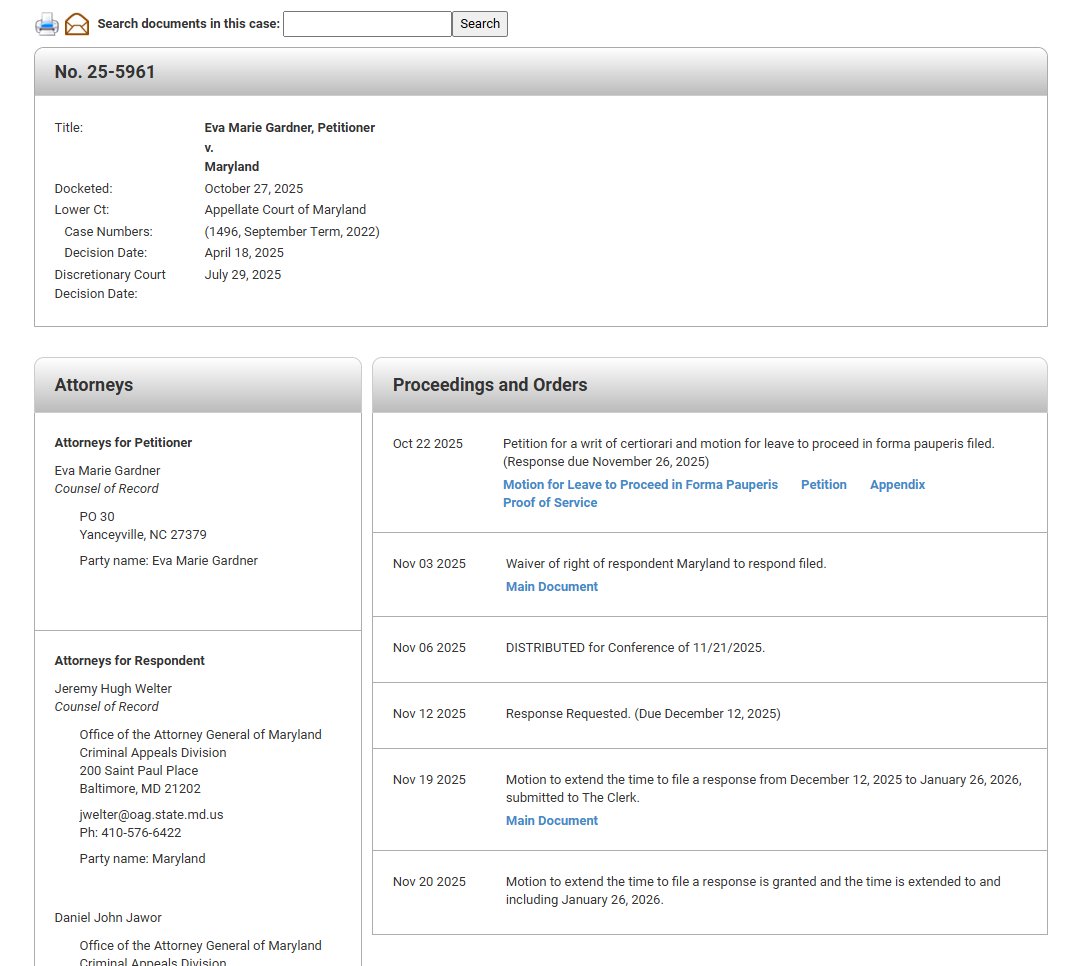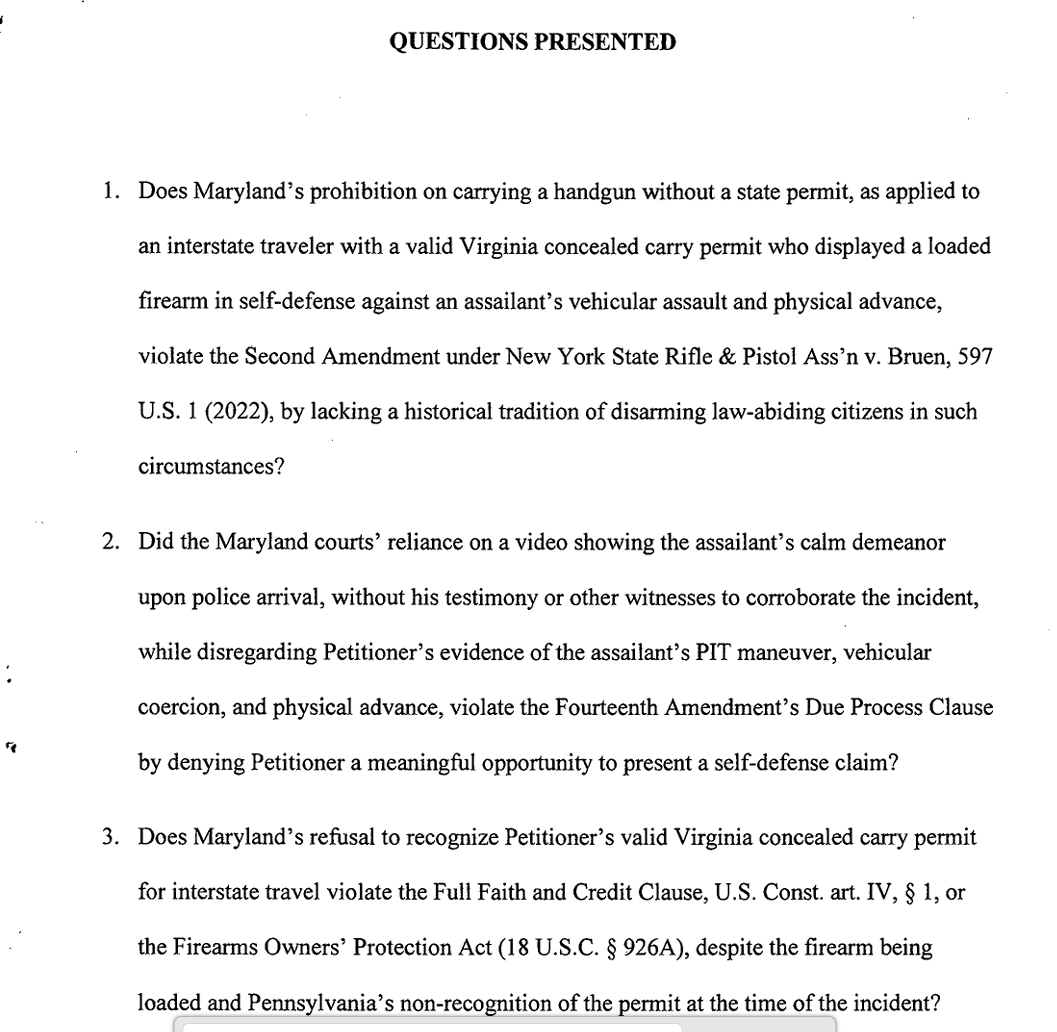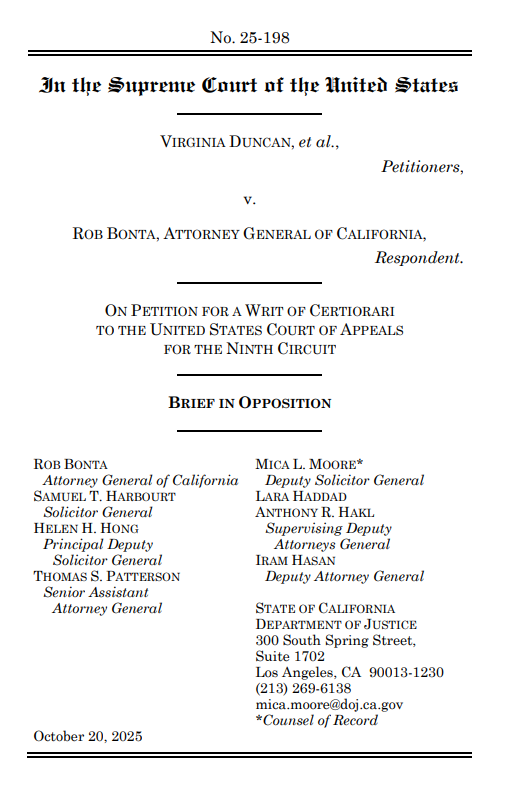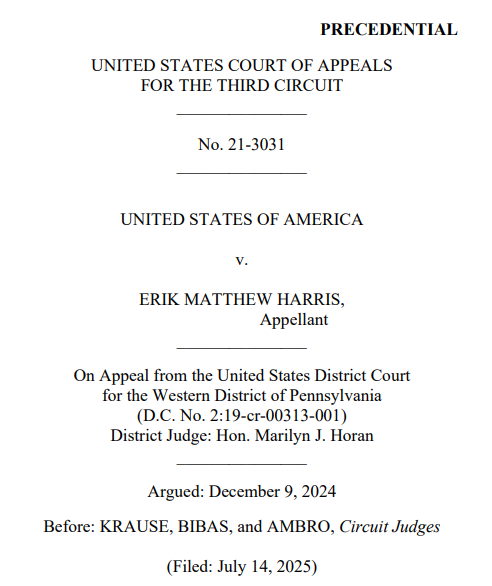
Director of Legal Research and Education, @2AFDN. The Second Amendment is my main obsession. Any opinions expressed here are only my own.
3 subscribers
How to get URL link on X (Twitter) App


 The questions presented, if granted, would obviously be narrowed.
The questions presented, if granted, would obviously be narrowed. 

 Two bits of background information you should know beforehand:
Two bits of background information you should know beforehand:

https://x.com/MorosKostas/status/1986940996899262542
 I don't even think it was right for the judge to order the spending of the very limited contingency funds, as judges should not get to decide how money designated for an emergency gets spent.
I don't even think it was right for the judge to order the spending of the very limited contingency funds, as judges should not get to decide how money designated for an emergency gets spent.
 "May acquire as many approved firearms as they want" is a funny point, because it has only been true for a few months since California lost in Nguyen. California was trying to limit us to one gun per month.
"May acquire as many approved firearms as they want" is a funny point, because it has only been true for a few months since California lost in Nguyen. California was trying to limit us to one gun per month.



 As some pointed out below, CMP also sells $500 1911s made more recently, but those are no available in Massachusetts, California, or even DC due to state and local laws in each.
As some pointed out below, CMP also sells $500 1911s made more recently, but those are no available in Massachusetts, California, or even DC due to state and local laws in each. 

 Ah yes, another example of "bad facts make bad law."
Ah yes, another example of "bad facts make bad law." 

 Before I begin, you can see more about @2AFDN's case Greene v. Garland here:
Before I begin, you can see more about @2AFDN's case Greene v. Garland here: 
 The federal govt explains it is filing the brief pursuant to Trump's Second Amendment executive order, and so "lawabiding Americans in this Circuit are not deprived of the full opportunity to enjoy the exercise of their Second Amendment rights."
The federal govt explains it is filing the brief pursuant to Trump's Second Amendment executive order, and so "lawabiding Americans in this Circuit are not deprived of the full opportunity to enjoy the exercise of their Second Amendment rights."

 Note that Mexico has a constitutional right to arms in its constitution just like we do.
Note that Mexico has a constitutional right to arms in its constitution just like we do. 

https://twitter.com/MorosKostas/status/1929531775791108196
 First up is Kavanaugh, in a statement respecting the denial of cert. (Basically a concurrence in denying it)
First up is Kavanaugh, in a statement respecting the denial of cert. (Basically a concurrence in denying it)

 Right from the start, they are unjustifiably limiting the scope of the right. The Second Amendment is NOT just about personal self-defense, and the language from the Supreme Court is that arms commonly used for lawful purposes are protected.
Right from the start, they are unjustifiably limiting the scope of the right. The Second Amendment is NOT just about personal self-defense, and the language from the Supreme Court is that arms commonly used for lawful purposes are protected. 

 Great introduction that goes into the ramifications of the vampire rule. And as our amicus brief will cover, this was intentional. The vampire rule was created by antigun academics who openly stated the aim was to discourage carry.
Great introduction that goes into the ramifications of the vampire rule. And as our amicus brief will cover, this was intentional. The vampire rule was created by antigun academics who openly stated the aim was to discourage carry. 

 Bruen was clear that judges are not supposed to engage in interest balancing, and yet every hostile ruling on magazines or "Assault weapons" begins by heartstring-tugging about mass shootings.
Bruen was clear that judges are not supposed to engage in interest balancing, and yet every hostile ruling on magazines or "Assault weapons" begins by heartstring-tugging about mass shootings. 

 Ok?
Ok? 

 A strong opening here, basically telling the Court that if they don't put a stop to this, it will have only itself to blame when the abuse continues. I would only add that the reason the lower courts have all gone the same way is because the more pro-gun circuits never see such cases, being generally made up of more pro-gun states.
A strong opening here, basically telling the Court that if they don't put a stop to this, it will have only itself to blame when the abuse continues. I would only add that the reason the lower courts have all gone the same way is because the more pro-gun circuits never see such cases, being generally made up of more pro-gun states.

 They always focus on this language from Heller, but ignore four things:
They always focus on this language from Heller, but ignore four things:

 The "Rorschach test of America's gun debate." I like that.
The "Rorschach test of America's gun debate." I like that. 

 Congressman Blount knew how this could be abused, even with the apparent allowance for open carry.
Congressman Blount knew how this could be abused, even with the apparent allowance for open carry. 